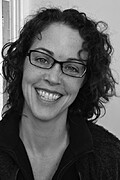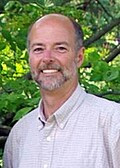CHE presents the fourth call in a series featuring the Superfund Research Program.
Indoor air quality in homes, workplaces, schools and other buildings may be compromised by vapor intrusion resulting from hazardous material volatilizing into the basement or ground floor of a building. These vapors might come from landfills, hazardous waste sites, leaking underground storage tanks or even drycleaners. The problem of vapor intrusion has been studied for decades but remains difficult for public health professionals to assess and manage.
Early work on this topic was related to radon, a naturally occurring agent whose radioactive nature is the basis of human health risks. Focus has now expanded to intrusion of volatile organic compounds (VOCs). Depending on subsurface geology, individual building conditions and even weather conditions, indoor air concentrations of contaminants can vary substantially from day to day across an entire neighborhood. Contaminant concentrations are not only difficult to predict, they are also expensive to measure. Despite the challenges of predicting or characterizing the vapor intrusion problem, regulatory agencies are tasked with developing regulations or guidelines to ensure protection of human health. The speakers on this call discussed common sources of chlorinated volatile compounds in indoor air generally and sources via the vapor intrusion pathway specifically, health concerns regarding exposures, research methods for characterizing exposure risk, and regulatory challenges at the state and federal level. They also provided a few examples of vapor intrusion sites.
Featured Speakers
 Madeleine Scammel, DSc, conducts research in the use of qualitative methods in the area of community-driven environmental health and epidemiologic studies, mapping and monitoring community-identified environmental health hazards, and analyzing cumulative exposures to chemical and non-chemical stressors. She is the principal investigator of an EPA grant to study cumulative risk to social and environmental stressors in urban populations. This grant is a community-based participatory research project located conducted in partnership with the Chelsea Collaborative. Dr. Scammel also directs Community Engagement and Research Translation Cores of the Boston University Superfund Research Program and the Partnerships and Collaborations Core for the Partners in Health and Housing Prevention Research Center (PHH-PRC) at Boston University. In these capacities her work includes developing long-term mechanisms to support research relationships between community groups and scientists and responding to community requests for assistance. Dr. Scammel serves on the Board of Health in the City of Chelsea and is also a member of the board of directors of the Science & Environmental Health Network. Research interests include environmental justice, health inequality, community mapping, community health indicators, community-based participatory research, human biomonitoring and ethics.
Madeleine Scammel, DSc, conducts research in the use of qualitative methods in the area of community-driven environmental health and epidemiologic studies, mapping and monitoring community-identified environmental health hazards, and analyzing cumulative exposures to chemical and non-chemical stressors. She is the principal investigator of an EPA grant to study cumulative risk to social and environmental stressors in urban populations. This grant is a community-based participatory research project located conducted in partnership with the Chelsea Collaborative. Dr. Scammel also directs Community Engagement and Research Translation Cores of the Boston University Superfund Research Program and the Partnerships and Collaborations Core for the Partners in Health and Housing Prevention Research Center (PHH-PRC) at Boston University. In these capacities her work includes developing long-term mechanisms to support research relationships between community groups and scientists and responding to community requests for assistance. Dr. Scammel serves on the Board of Health in the City of Chelsea and is also a member of the board of directors of the Science & Environmental Health Network. Research interests include environmental justice, health inequality, community mapping, community health indicators, community-based participatory research, human biomonitoring and ethics.
 Kelly Pennell, PhD, PE, is an assistant professor in the Department of Civil Engineering at the University of Kentucky. She teaches graduate and undergraduate students and conducts environmental research. Her research interests include the fate and transport of environmental contaminants, water disinfection processes and environmental systems modeling. In addition to research and teaching, she has experience as an environmental consultant and a governmental liaison. Drawing from all of her current and previous experience, her research is situated at the interface of research, policy and practice. She received a Bachelor of Science in civil engineering from Lawrence Technology University in 1997 and a Master of Science in environmental engineering from Rose-Hulman Institute of Technology in 2001. In 2005 she received her doctorate in civil (environmental) engineering from Purdue University. From 2005 until 2010 she was the state agencies liaison for Brown University’s Superfund Research Program. From 2010 until 2013, she was an assistant professor in the Civil & Environmental Engineering Department at the University of Massachusetts Dartmouth. She has been a licensed professional engineer (PE) since 2001.
Kelly Pennell, PhD, PE, is an assistant professor in the Department of Civil Engineering at the University of Kentucky. She teaches graduate and undergraduate students and conducts environmental research. Her research interests include the fate and transport of environmental contaminants, water disinfection processes and environmental systems modeling. In addition to research and teaching, she has experience as an environmental consultant and a governmental liaison. Drawing from all of her current and previous experience, her research is situated at the interface of research, policy and practice. She received a Bachelor of Science in civil engineering from Lawrence Technology University in 1997 and a Master of Science in environmental engineering from Rose-Hulman Institute of Technology in 2001. In 2005 she received her doctorate in civil (environmental) engineering from Purdue University. From 2005 until 2010 she was the state agencies liaison for Brown University’s Superfund Research Program. From 2010 until 2013, she was an assistant professor in the Civil & Environmental Engineering Department at the University of Massachusetts Dartmouth. She has been a licensed professional engineer (PE) since 2001.
 Paul Locke, MS, has been with the Massachusetts Department of Environmental Protection since 1987 and is currently the director for response & remediation in the Bureau of Waste Site Cleanup, overseeing implementation of the Massachusetts Contingency Plan (including audits, compliance & enforcement and data management systems) as well as the Federal Sites section. As division director, Mr. Locke also coordinates with other MassDEP programs, such as Hazardous Waste, Wetlands and Solid Waste, whenever there is regulatory overlap with Waste Site Cleanup. He has also served as director of policy and program development, during which time MassDEP promulgated significant revisions to the MCP and first-in-the-nation standards for perchlorate. Before joining Waste Site Cleanup 2002, he was head of the Risk Analysis Group within the MassDEP Office of Research and Standards, where he participated in environmental policy development, reviewed site-specific reports and provided technical assistance to DEP staff and the regulated community. Mr. Locke has participated in numerous revisions to the site cleanup regulations, including the changes that resulted in a semi-privatized cleanup program in 1993. He is the primary author of the rules that determine “how clean is clean enough?”—the regulations on human and environmental risk characterization. Current projects include the development of a comprehensive soil management strategy, Regulatory Reform (i.e., updating and streamlining) of the cleanup regulations, and the implementation of DEP’s vapor intrusion initiatives. He holds a bachelor's degree in chemistry from Harvard College and a master's degree in civil engineering from the Tufts University program in Public Health.
Paul Locke, MS, has been with the Massachusetts Department of Environmental Protection since 1987 and is currently the director for response & remediation in the Bureau of Waste Site Cleanup, overseeing implementation of the Massachusetts Contingency Plan (including audits, compliance & enforcement and data management systems) as well as the Federal Sites section. As division director, Mr. Locke also coordinates with other MassDEP programs, such as Hazardous Waste, Wetlands and Solid Waste, whenever there is regulatory overlap with Waste Site Cleanup. He has also served as director of policy and program development, during which time MassDEP promulgated significant revisions to the MCP and first-in-the-nation standards for perchlorate. Before joining Waste Site Cleanup 2002, he was head of the Risk Analysis Group within the MassDEP Office of Research and Standards, where he participated in environmental policy development, reviewed site-specific reports and provided technical assistance to DEP staff and the regulated community. Mr. Locke has participated in numerous revisions to the site cleanup regulations, including the changes that resulted in a semi-privatized cleanup program in 1993. He is the primary author of the rules that determine “how clean is clean enough?”—the regulations on human and environmental risk characterization. Current projects include the development of a comprehensive soil management strategy, Regulatory Reform (i.e., updating and streamlining) of the cleanup regulations, and the implementation of DEP’s vapor intrusion initiatives. He holds a bachelor's degree in chemistry from Harvard College and a master's degree in civil engineering from the Tufts University program in Public Health.
Maria Valenti, national coordinator of CHE's Healthy Aging and the Environment Initiative, moderated this call.
